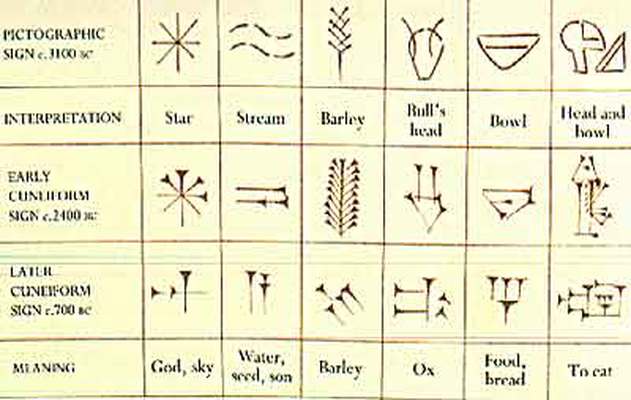
Cuneiform was a writing system invented by the ancient sumer people of the mesopotamian region (ancient middle east). For over 3,000 years, the cuneiform script remained the.
The pictographic symbols were refined into the writing system known as cuneiform.
Cuneiform symbols and their meanings. At this time, cuneiform had over 1,000 symbols, many of which are recognizable as drawings of everyday objects. The ancient sumerians developed a written language called cuneiform. Purely phonetic (syllabic) notations of words began to be used.
Note about sex symbols and their meaning. Over time, the pictorial representations. Logogram is a reading of a cuneiform sign which represents a word in the spoken language.
The akkadians (babylonians and assyrians) adapted cuneiform writing to their own semitic inflected language in the middle of the third millennium b.c., reducing the number of symbols to 300 and devising new syllabic values corresponding to the akkadian phonetic system; Created by the sumerians in the late 4th millennium bc, cuneiform writing began as a system of pictographs. In the uruk/warka region of southern iraq.
Pictographs worked, but hey were rather cumbersome. Originally created to represent syllables in the ancient sumerian language The language that they spoke, sumerian, is known to us through a large body of texts and
The cuneiform script is one of the earliest known forms of written expression. This is the symbol that makes up the right half or side of the image from the alien craft: The number of symbols in cuneiform.
The tablets contain cuneiform script, created by the sumerians 6,000 years ago. In this lesson, sixth grade students created their own cuneiform tablets inspired by ancient mesopotamian writing. For example, α is named greek small letter alpha.
The script was in active use from the early bronze age until the beginning of the common era. Sumerian scribes invented the practice of writing in cuneiform on clay tablets sometime around 3400 b.c. For over 3,000 years, the cuneiform script remained the.
U+1243a 𒐺 & u+122f0 𒋰: What we have so far is the bir3, la2 symbols, and a dot placed over them, which reflects either “1” of one unit of “60”. The name archaeologists gave to the school houses because students used numerous clay tablets and spent much time copying written materials onto clay tablets.
Early cuneiform symbols were tied to their meaning, making them logographic. The pictographic symbols were refined into the writing system known as cuneiform. Cuneiform sign ash over ash over ash & tab sign form congruent with u+1213f 𒄿:
Cuneiform was a writing system invented by the ancient sumer people of the mesopotamian region (ancient middle east). Cuneiform symbols were scratched with a pointed stylus onto moist clay tablets, usually rectangular and about the size of a small notepad or iphone. Typically, when a symbol has one universal meaning, unicode names it by the character�s meaning.
The tablets were then baked in the sun or dried in a kiln. Unicode assign each character a name. ⚭ marriage symbol ⚮ divorce symbol ⚯ unmarried partnership symbol;
And here are those two symbols placed into their composite form: Cuneiform numeric sign three variant form esh16 & tab 514: Sumerian is the first known written language.
Lu2 opposing lu2 330_60n2 u+12214 𒈔 En is a symbol in sumerian cuneiform, which in the sumerian language means “lord” or “priest.”. It began as pictographs, pictures of things that acted as words.
One place where we commonly see the use of the word and symbol en is as a prefix to the names of gods. Two of the great gods of the sumerian pantheon, enlil and enki for example, bear the word and symbol of en in their name.